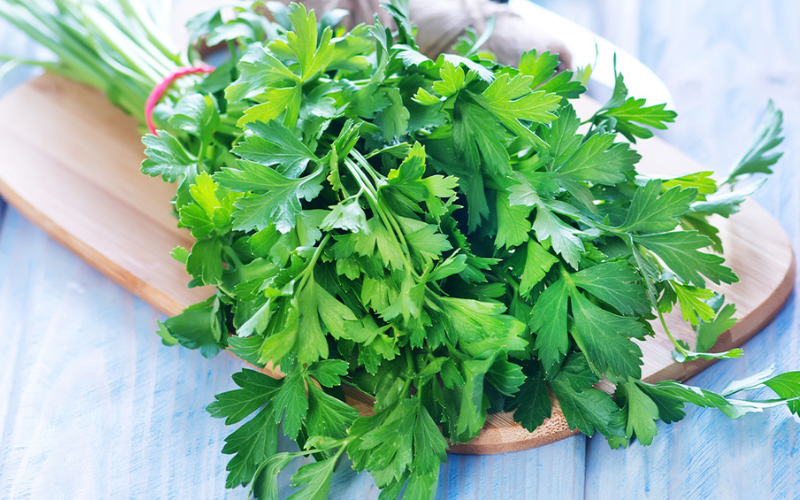Cilantro vs. Parsley: Exploring the Differences and Uses
Cilantro and parsley are two popular herbs that often find their way into various cuisines around the world. While they may look similar, these herbs have distinct flavors and uses in culinary applications. Join us as we delve into the world of cilantro and parsley, unraveling their unique characteristics and helping you understand when to use each herb to enhance your dishes.

Parsley vegetable
I. Cilantro: The Herb with a Bold and Bright Flavor
1. Flavor Profile: Discover the distinctive flavor of cilantro, characterized by its fresh, citrusy, and slightly peppery notes. Learn how this herb can add a vibrant and aromatic touch to your dishes.
2. Culinary Uses: Explore the diverse culinary uses of cilantro, including its incorporation in salsas, guacamole, curries, marinades, and as a garnish for soups, salads, and tacos.
II. Parsley: The Versatile and Herbaceous Companion
1. Flavor Profile: Uncover the unique flavor profile of parsley, known for its fresh, slightly bitter, and earthy taste. Learn how this herb can add depth and balance to a wide range of recipes.
2. Culinary Uses: Discover the versatility of parsley, commonly used as a flavor enhancer and garnish in dishes like pasta, salads, stews, roasted vegetables, and as a key ingredient in classic sauces like chimichurri.
III. Cilantro vs. Parsley: What Sets Them Apart?
1. Appearance: Examine the visual differences between cilantro and parsley, including their leaf shapes, textures, and overall appearance.
2. Flavor Comparison: Highlight the contrasting flavor profiles of cilantro and parsley, emphasizing cilantro's bright and bold notes versus parsley's herbaceous and slightly bitter taste.
3. Culinary Compatibility: Discuss the specific types of dishes that cilantro and parsley complement best, allowing readers to understand when to use each herb for optimal flavor.
IV. Cooking Tips and Pairings:
1. Cilantro Cooking Tips: Provide practical tips for handling and using cilantro in recipes, including proper storage, washing techniques, and flavor pairings with ingredients like lime, garlic, and chili peppers.
2. Parsley Cooking Tips: Offer helpful suggestions for incorporating parsley into your culinary creations, such as using it as a finishing herb, adding it to sauces for freshness, and pairing it with ingredients like lemon, garlic, and olive oil.
V. Health Benefits and Nutritional Value:
1. Cilantro's Health Benefits: Explore the potential health benefits of cilantro, including its antioxidant properties, digestive aid qualities, and potential detoxification benefits.
2. Parsley's Health Benefits: Discuss the nutritional advantages of parsley, such as its high vitamin C and K content, potential anti-inflammatory effects, and contribution to healthy digestion.

In the cilantro vs. parsley debate, both herbs have their unique qualities that can elevate your dishes to new heights. Understanding their flavor profiles, culinary uses, and compatibility will help you make informed decisions when incorporating them into your recipes. Whether you seek the boldness of cilantro or the versatility of parsley, these herbs are valuable additions to any kitchen. Embrace their distinct flavors, experiment with different combinations, and let cilantro and parsley enhance the taste and visual appeal of your culinary creations